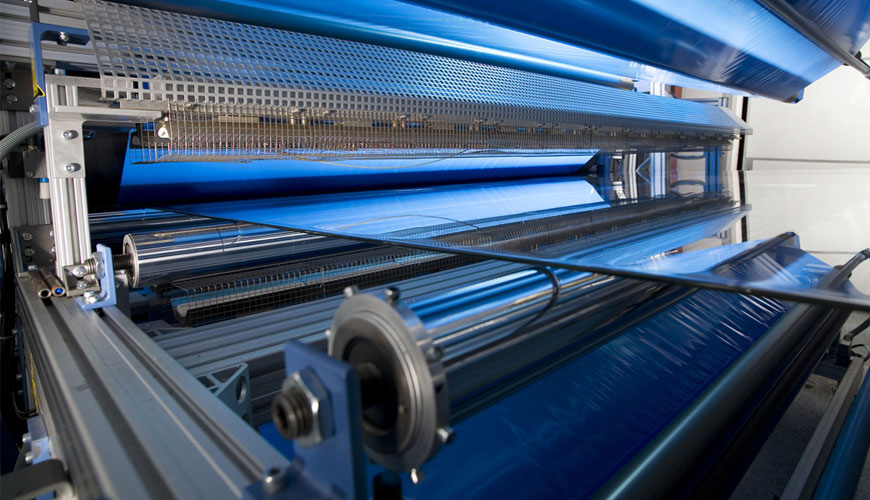

EUROLAB laboratory provides testing and compliance services within the scope of ISO 15106 standard. The ISO 15106 standard, developed by the International Standards Organization (ISO), specifies a method for determining the water vapor transmission rate of multilayer structures, including plastic film, plastic sheet, and plastics, using an atmospheric pressure ionization mass spectrometric detection sensor. The method provides rapid measurement over a wide range of water vapor transmission rates.

A test specimen is mounted in a transmission cell that creates a sealed barrier between the two chambers. The upstream chamber is usually the high pressure side, and the downstream chamber is usually the low pressure side. After the test sample is placed in the delivery cell, the downstream chamber and the upstream chamber are emptied.
After discharge, water vapor is supplied to the upstream chamber. Water vapor penetrates from the upstream chamber into the downstream chamber. The amount of water vapor passing through the test sample is determined by increasing the pressure in the downstream chamber.
Samples shall be representative of the material, free of wrinkles, creases and pinholes, and of uniform thickness. Each sample will have an area larger than the conduction area of the cell.
Rough end products are not suitable for samples to avoid water vapor leakage. Unless otherwise specified or agreed by the parties concerned, three samples will be tested. Samples shall be conditioned at the same temperature and humidity specified for testing for a period appropriate to the material being tested, unless otherwise agreed between the parties concerned.
The device consists of a water vapor conduction cell designed to allow water vapor to pass through the sample, a pressure sensor to detect the pressure change caused by the passage of water vapor through the sample, and a water vapor generator to feed the water vapor.
The conduction cell shall consist of an upstream chamber and a downstream chamber designed so that the water vapor transmission area is constant for any sample installed in the conduction cell. The upstream chamber will have an inlet for water vapor and the downstream side will be connected to a pressure sensor. The surfaces in contact with the sample must be smooth and flat so that there is no leakage. The diameter of the water vapor transmission area will typically be from 5 mm to 200 mm.
The sensor should be able to detect the change in pressure downstream. A minimum accuracy of 0,2 Pa (0,001 5 mmHg) will suffice for most measurements. A mercury-free vacuum gauge, electronic diaphragm-type sensor, or other suitable type of sensor shall be used.
Among the services provided by our organization within the framework of material testing services, there are also ISO 15106 standard tests. Do not hesitate to contact our laboratory EUROLAB for your testing and certification requests.
To get an appointment, to get more detailed information or to request an evaluation, you can ask us to fill in our form and reach you.